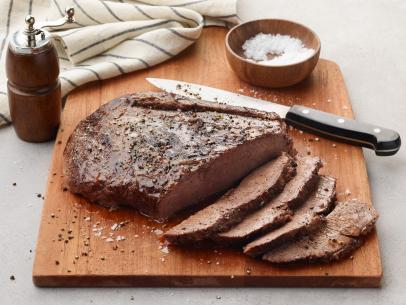Sicilian Peperonata Recipe & Serving Ideas
Peperonata originates from Sicily, an island known for its rich culinary heritage. Sicilian cuisine blends Mediterranean flavors, with influences from Greek, Arab, and Norman cultures. You can find peperonata in various Sicilian households, showcasing the region’s reliance on fresh, local ingredients. Sicily’s mild climate, abundant sunshine, and fertile soil contribute to the high quality of bell peppers and tomatoes essential for making this dish. When you prepare peperonata, you’re not just making a side dish; you’re immersing yourself in centuries of Sicilian tradition.
Historical Significance in Italian Cuisine
The roots of peperonata can be traced back to ancient culinary practices. Historically, it occupied a central role in Italian peasant cooking, aimed at making the most of seasonal produce. This dish emerged as a practical solution for preserving surplus vegetables through cooking. You can see its popularity in various Italian regions, each adding a unique twist to the classic recipe. Peperonata’s simplicity and versatility, allowing it to be served hot, cold, or at room temperature, made it a staple from everyday meals to festive occasions. By including peperonata in your culinary repertoire, you embrace a piece of Italian history marked by respect for ingredients and tradition.
Key Ingredients in My Sicilian Ex Mother-in-Law’s Peperonata
Highlighting Peppers and Tomatoes
Peppers and tomatoes form the backbone of traditional peperonata. Bell peppers, in particular, lend vibrant colors and a sweet, slightly tangy flavor to the dish. Use red, yellow, and green bell peppers to create a visually appealing and flavorful medley. Ensure that the peppers are fresh and firm to achieve the best texture and taste.
Tomatoes, another staple, add a rich, savory depth to peperonata. Choose ripe, juicy tomatoes to provide the necessary acidity and sweetness. Plum tomatoes or San Marzano varieties work exceptionally well due to their ideal balance of meatiness and juiciness. Always use fresh tomatoes when possible, but good-quality canned tomatoes can be a suitable alternative in the off-season.
The Importance of Fresh Herbs
Fresh herbs play a crucial role in enhancing the flavors of peperonata. Basil and parsley are the most commonly used herbs in this dish. Basil introduces a sweet, aromatic essence, while parsley adds a fresh, slightly peppery note. Incorporate these herbs generously but ensure they are finely chopped to blend seamlessly with the peppers and tomatoes.
Other herbs like oregano and thyme can be added for additional depth. Oregano contributes a robust, earthy flavor, and thyme offers a subtle, slightly minty taste. Always opt for fresh herbs over dried ones to maintain the authenticity and vibrancy of the dish.
Incorporating these key ingredients with attention to their freshness and quality ensures a peperonata that bursts with the authentic flavors of Sicily.
Step-by-Step Recipe Breakdown
Preparing the Vegetables
Start by washing the vegetables thoroughly. Use 3 bell peppers (red, yellow, green) for color variation. Slice them into thin strips. Dice 2 medium onions and 4 ripe tomatoes into small chunks. Crush 3 garlic cloves. Remove the seeds and membranes from the bell peppers for a milder taste.
Cooking Techniques and Times
Heat 4 tablespoons of extra virgin olive oil in a large pan over medium heat. Add the sliced onions and cook, stirring often, until soft and translucent. Throw in the crushed garlic and cook for an additional 2 minutes. Add the bell peppers and cook for 10-12 minutes, stirring occasionally, until they soften. Pour in the diced tomatoes and cook for another 15 minutes. Season with salt, black pepper, and a pinch of sugar to balance the acidity of the tomatoes. Mix in chopped basil and parsley in the last 5 minutes of cooking. Let the peperonata cool slightly before serving to allow the flavors to meld.
Serving Suggestions
Accompaniments and Pairings
Peperonata pairs well with a variety of main dishes and can enhance various meals. Serve it as a side dish with grilled meats like chicken, steak, or pork chops to add a burst of flavor. Pair it with fish such as cod or sea bass to complement the seafood’s mild taste.
Include peperonata in vegetarian meals. Mix it with pasta, rice, or quinoa for a nutritious and colorful main dish. Use it as a topping for bruschetta or crostini to create a vibrant appetizer. Peperonata also works well in a sandwich or wrap when combined with fresh mozzarella or roasted vegetables.
Serving Styles Across Different Meals
Incorporate peperonata into breakfast, lunch, or dinner. Top scrambled eggs or an omelet with peperonata for a savory breakfast. Use it as a filling for a frittata or breakfast burrito to start the day with a Sicilian twist.
Serve peperonata as a cold salad at lunch, mixed with greens and a drizzle of balsamic vinegar. Alternatively, use it as a warm topping for a baked potato or roasted sweet potato.
At dinner, present peperonata as a tapas-style dish alongside other small plates. Integrate it into a grain bowl with roasted chickpeas and tahini sauce for a hearty, healthy meal. Peperonata’s versatility makes it suitable for any meal and enhances a wide range of dishes.
Conclusion
Embracing the rich tradition of Sicilian cuisine, your journey with peperonata will not only delight your taste buds but also bring a piece of Sicily into your kitchen. This versatile dish, with its vibrant flavors and adaptability, can transform any meal into a memorable culinary experience. Whether you’re pairing it with grilled meats or incorporating it into a breakfast omelet, peperonata stands out as a testament to the magic of simple, fresh ingredients. Dive into the world of Sicilian cooking and let peperonata become a beloved part of your recipe repertoire.






